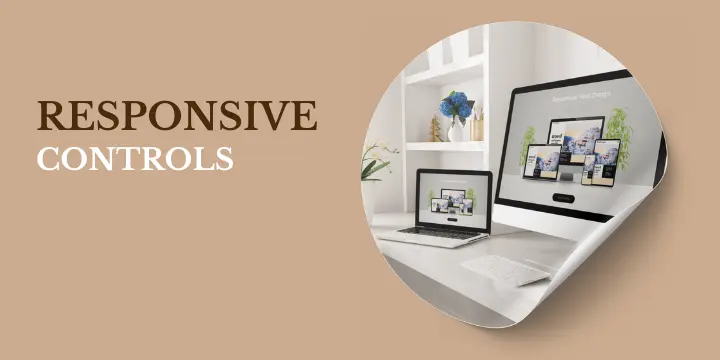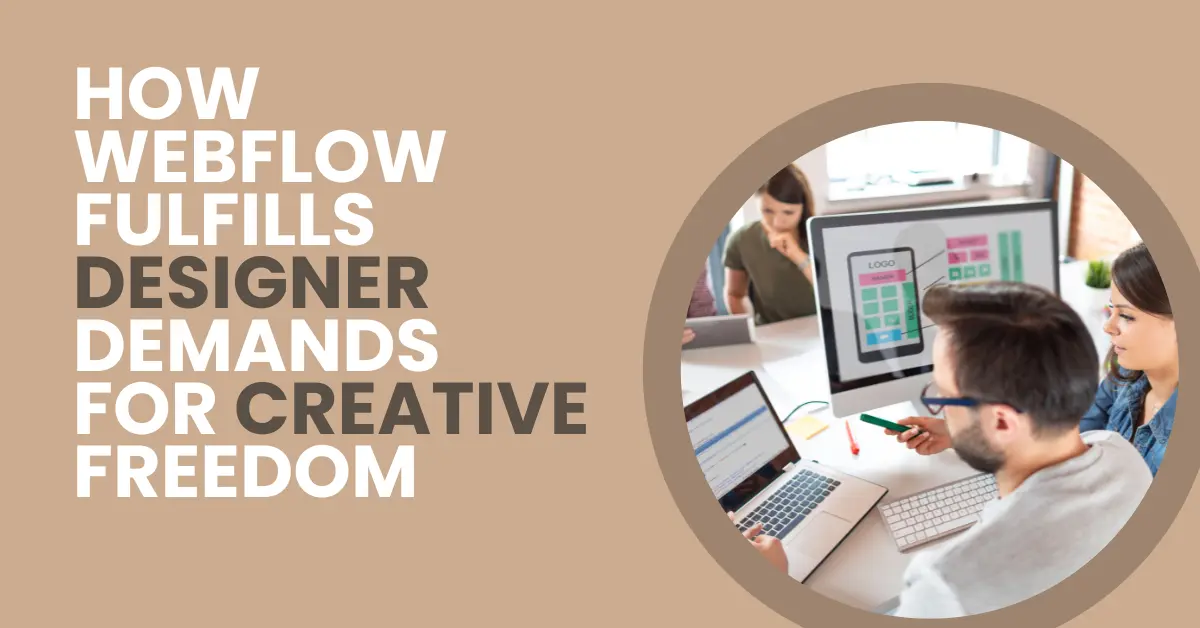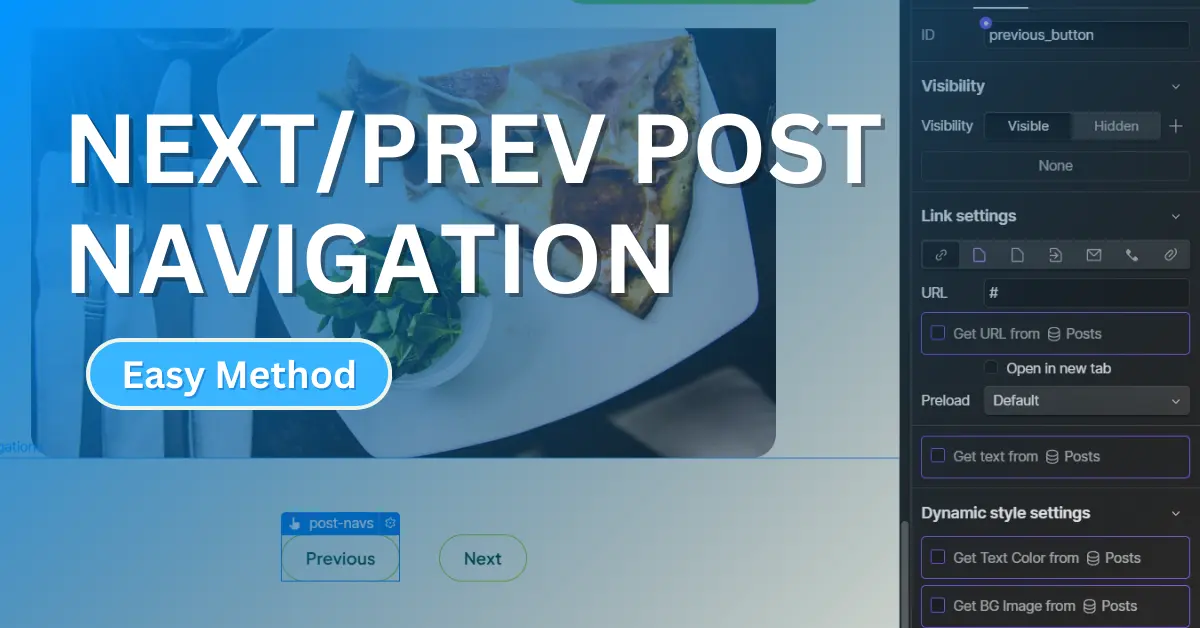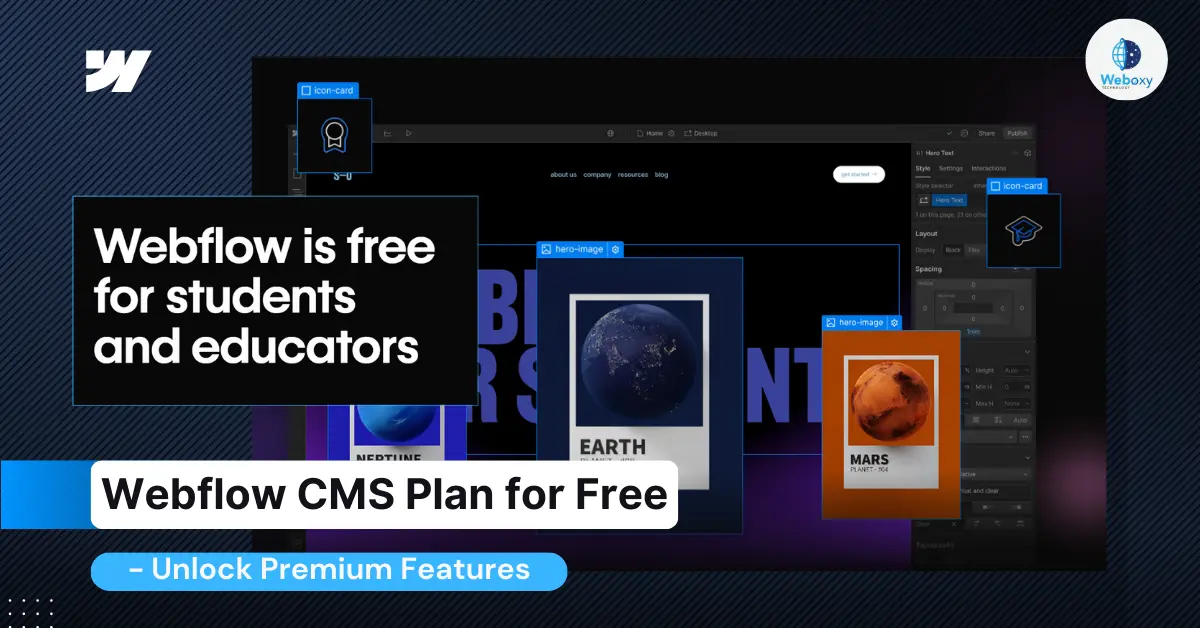Today, web development is not solely the domain of developers. Modern web design prioritizes interactive and engaging content, making it crucial for effective marketing. Creating visually appealing and dynamic websites is more popular than ever, surpassing the simpler sites of the past.
With technology at its peak, the competition in the tech environment demands creativity to capture and maintain the interest and trust of customers and clients.
Let’s discuss how Webflow fulfills designer demands for creative freedom, stepping into a role traditionally held by developers. Webflow promotes designer creativity and provides a deeper understanding of the web development environment.
Here are the key areas where designers can experience creative freedom in the development field:
1. Advanced Prototyping

Webflow offers a freemium plan, allowing users to access the platform for free and upgrade as needed. Designers can create highly customized prototypes to test and refine their creative ideas.
This environment enables them to focus on producing engaging content while exploring the platform’s extensive features, ultimately building trust in Webflow’s capabilities.
Webflow provides advanced prototyping capabilities not only for static designs but also for highly interactive and engaging sites. This allows designers to meet client demands effectively and gain a competitive edge in the market.
2. Visual Interface

Webflow offers a highly customizable visual interface, which is crucial for designers. It engages designers by providing a visually rich environment where they can create without needing to code. This interface empowers designers to focus on crafting unique designs through intuitive customization options rather than worrying about coding intricacies.
Webflow enhances designers’ capabilities by providing a free, engaging environment within its design tools. Here, designers can explore creativity aligned with the latest web trends. Its visual interface creates a designer-friendly environment, minimizing the need for deep coding expertise.
3. Providing Full Solutions

Designers showcase their creativity in web development using Webflow. Many top-rated designers possess enough technical knowledge to function as professional web developers within their specialized fields, where technical expertise traditionally isn’t a client expectation.
In these domains, designers can fulfill client requirements and deliver comprehensive website solutions on the Webflow platform, combining their design prowess with effective problem-solving abilities.
Clients such as medical practices, law firms, dentists, and similar professionals prioritize creativity and innovative marketing approaches over highly technical web development features. They seek websites that effectively promote their businesses while showcasing creativity and engaging design, rather than focusing solely on technical complexities.
4. Real-time Environment

Clients benefit significantly from Webflow’s real-time project environment, enabling both clients and designers to closely monitor progress and ensure optimal outcomes. Webflow fosters a collaborative and dynamic workspace where designers can meet client expectations at every stage.
It empowers designers to showcase ongoing developments transparently, enhancing project effectiveness and client satisfaction.
Real-time environments provide invaluable advantages for both designers and developers, facilitating projects that are not only current but also aligned with future needs. This dynamic setting enhances collaboration, allowing continuous adjustments and improvements based on real-time feedback.
This approach not only ensures the final product meets evolving requirements but also fosters innovation and efficiency throughout the development process.
5. Templates Environment

Most designers who work with Webflow can create hundreds of their own templates, both free and paid, to promote creativity. Webflow allows these templates to be cloned or purchased from the designers.
This feature is particularly beneficial for beginners, as it allows them to see and learn from the work and creativity of others by cloning sites in Webflow. Webflow also promotes this by offering a vast collection of cloneable templates, helping both beginners and customers achieve their startup goals with high engagement.
It serves as a backbone for novice designers, enabling them to clone and study other materials without any issues, thus gaining valuable experience.
Designers can earn money by selling highly engaging sites on the Webflow marketplace, where Webflow analyzes and verifies template projects.
6. Bridging the Gap

With Webflow, designers can easily understand the work and challenges of developers. This platform enables designers to collaborate more effectively with developers, allowing for better guidance and a stronger connection between their work.
Developers can easily guide designers in creating engaging content, bridging the gap between designers and Webflow. Webflow’s collaborative environment plays a crucial role in this process, enabling developers and designers to work together seamlessly and complete tasks with zero errors.
7. Future Technologies

Being a part of the web development toolkit, Webflow represents future technology for designers who work within a creative development environment, offering extensive customization and interactive options.
Webflow is shaping the future of web design by enabling designers to create stunning, responsive websites without extensive coding. Its intuitive interface and robust CMS streamline workflows, offering greater creative control and efficiency.
With built-in animations and e-commerce capabilities, Webflow stands out as a pivotal tool for modern designers. As demand for dynamic web experiences grows, Webflow’s impact on the industry is undeniable.
8. Interactive Environment

Webflow offers extensive interactive customization, making it a top choice for designers. This tool allows designers to create trendy and modern interactions through a seamless drag-and-drop visual interface, eliminating the need for complex coding.
Designers enhance their interactive capabilities and set new trends daily. With increasing competition among designers to innovate, Webflow provides an ideal platform for creating unique interactions. It offers a comprehensive environment for designers to expand their skills and express their creativity without the hassle and cost of complex coding.
Webflow’s interactive animation capabilities include:
- Scroll Animations
- Hover Effects
- Page Load Animations
- Click and Tap Animations
- Mouse Movement Animations
- Parallax Scrolling
- Lottie Animations Integration
- Timeline-Based Animations
- Easing Controls
- Custom Trigger Animations
- 3D Transforms and Animation
- Looping Animations
9. Responsive Controls

Webflow offers a responsive mode that ensures your site is fully viewable and functional across all devices. This feature greatly benefits designers because it automatically adapts the site for smaller screens when they design it on larger screens.
It simplifies and accelerates the process of creating responsive sites, handling the adaptation seamlessly without requiring manual adjustments from the designer.
Designers can focus more on creativity and content, confident that Webflow’s responsive tools will maintain usability and aesthetics across diverse viewing platforms, enhancing both user experience and site performance.
Designers benefit from a streamlined workflow, allowing them to concentrate on creativity and content creation rather than technical adjustments. This approach not only enhances user experience but also boosts site performance, making Webflow a powerful ally in creating modern, responsive websites effortlessly.
Conclusion
In other words, we can say that Webflow is not ideal for all designers, but it takes a futuristic approach for those working in web development and design, thanks to its seamless features and customizations.
Ready to transform your online presence with Webflow? Contact Weboxy Technology, a leading Webflow development agency, for stunning, high-performing websites that captivate your audience!



